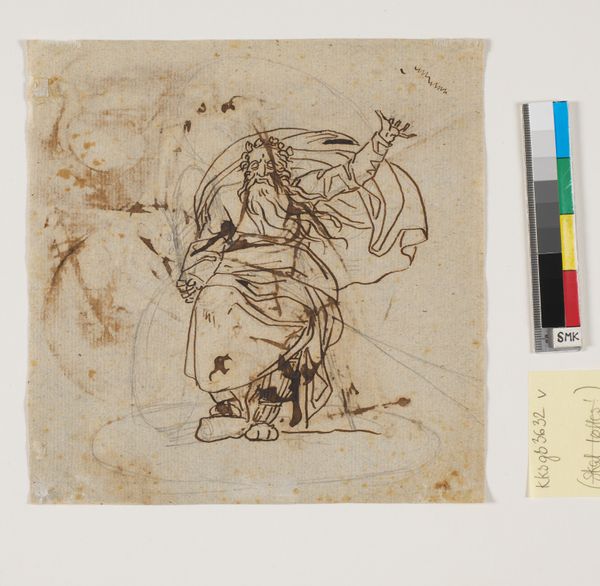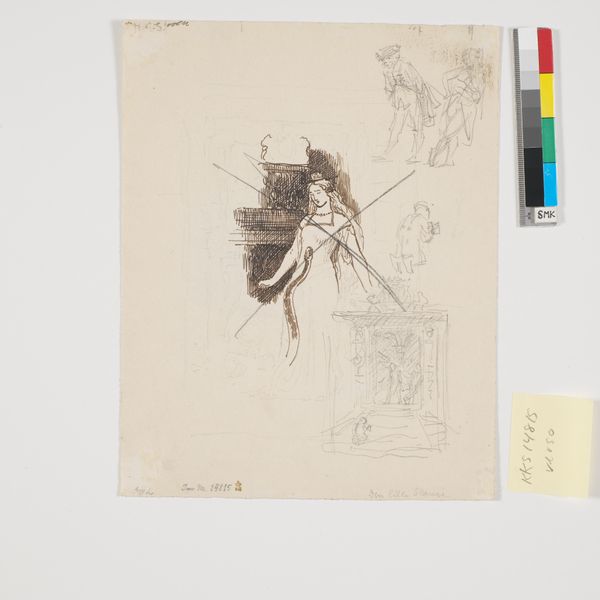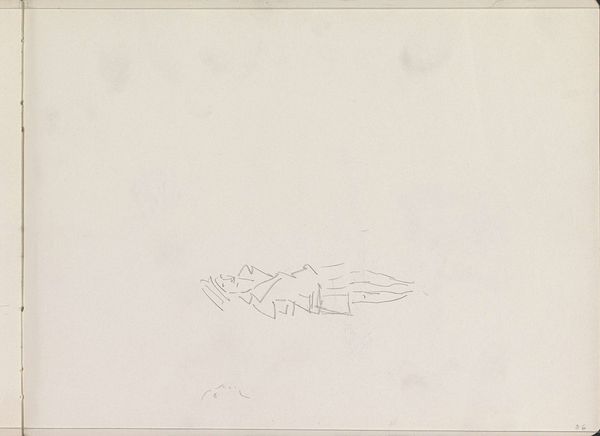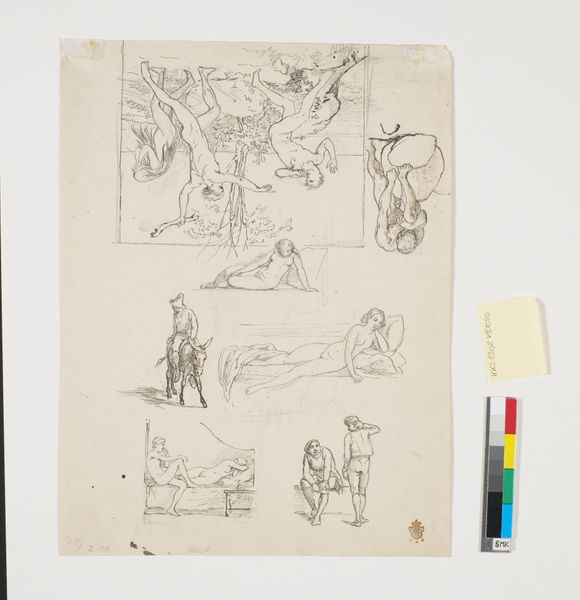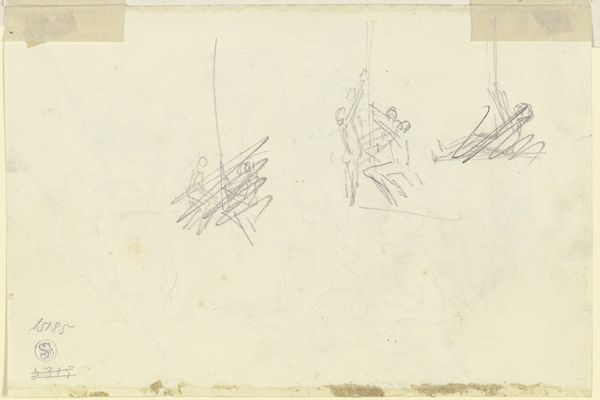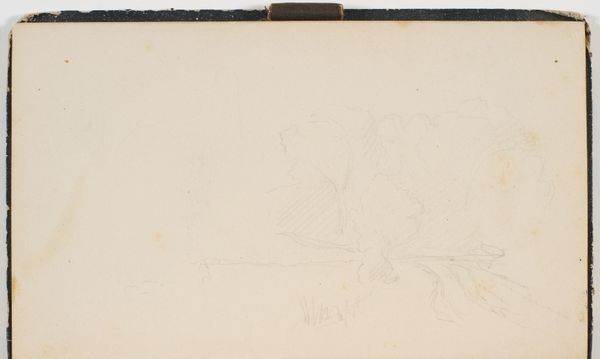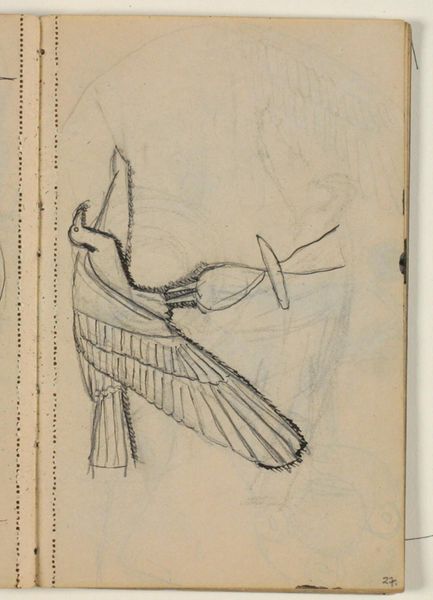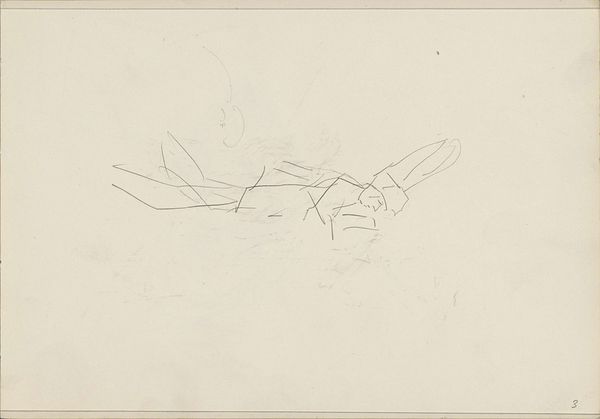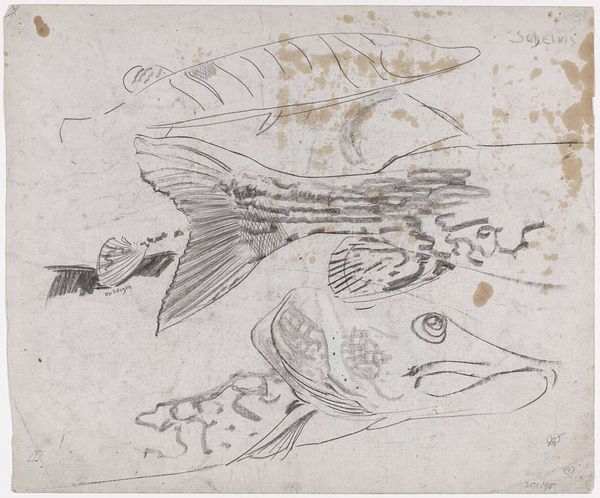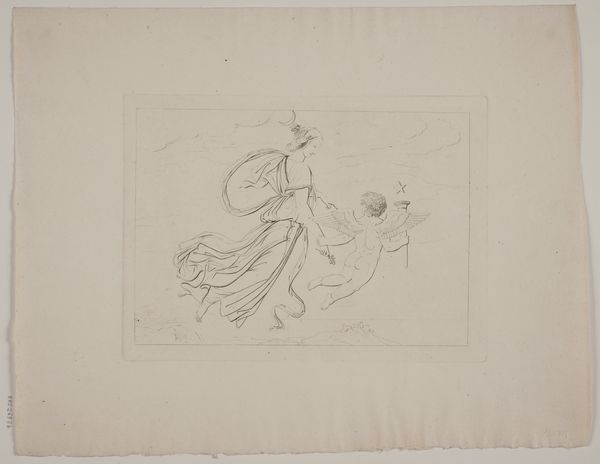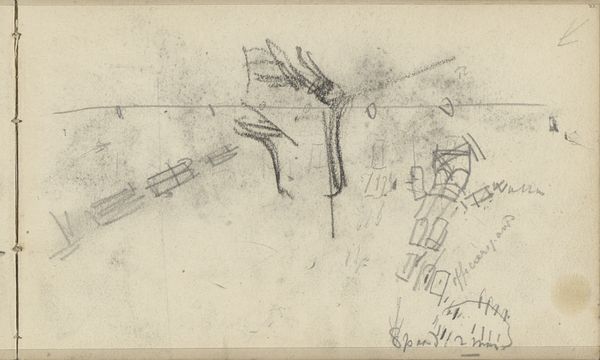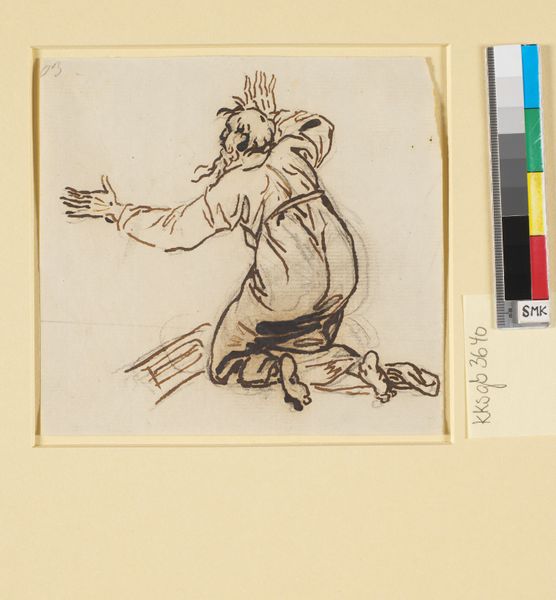
Samme motiv som recto, samt studier til sirenen 1886 - 1887
0:00
0:00
drawing, pencil
#
drawing
#
narrative-art
#
pencil
#
symbolism
Dimensions: 347 mm (height) x 355 mm (width) (bladmaal)
Curator: My goodness, it looks like something dreamt up in the wee hours. Airy and melancholic. Editor: Indeed! We’re looking at “Samme motiv som recto, samt studier til sirenen,” or “Same motif as recto, plus studies for the siren,” a pencil drawing made around 1886-87 by the Danish artist Niels Skovgaard. Curator: A siren… Well, now I see it. The sketchiness really lends to that sense of illusion, the almost-there. Like you’re peering into a myth. Editor: Absolutely. Skovgaard situates the figure within this circular frame, seemingly caught mid-performance before an entranced ship of sailors. Knowing his broader body of work, we understand Skovgaard as deeply invested in Nordic mythology and the representation of cultural identity at this time. The rise of nationalism shaped so much artistic production in Europe. Curator: Mmm, I like seeing the preparatory sketches—the one flying off to the side, for instance. Makes me feel I'm catching a glimpse into his artistic process, the searching, you know? Editor: Precisely. This wasn’t simply about illustrating a pre-determined scene; it was about finding the right symbolic language. Who gets to tell these stories? What versions get cemented as "truth"? The siren, a woman, becomes the captivating danger—a classic trope we still see echoed today. Curator: It does feel incredibly male- gaze-y, doesn't it? And, well, terribly sad. This solitary, winged figure singing for…whom, exactly? All those heads crowded on the boat look interchangeable, and the circular format makes me feel she’s caught in a kind of unending loop, forever singing. Editor: And consider this – the era in which this was produced saw art, specifically national art, used as a potent tool to bolster national identity and patriarchal systems. Myth and art went hand in hand to justify hierarchies and power structures. Curator: Well, now I’m even more melancholy than before, ha! Still, there's beauty in the execution. Such graceful lines with a dark undertow. Editor: Exactly. Skovgaard captures something enduring about the lure of myth and the troubled ways societies wield such images. It reminds us of the crucial responsibility we hold when looking to the past, in engaging with narratives and thinking critically about whose voices have historically been centered or erased.
Comments
No comments
Be the first to comment and join the conversation on the ultimate creative platform.

